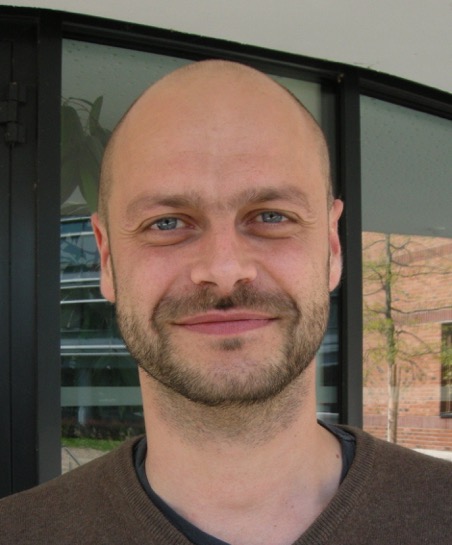Institut de Biologie Moléculaire des Plantes du CNRS, UPR2357, Université de Strasbourg, Strasbourg Neutralization of mobile antiviral small RNA through peroxisomal importNat. Plants 3, 17094. doi:10.1038/nplants.2017.94. Incarbone, M., Zimmermann, A., Hammann, P., Erhardt, M., Michel, F., and Dunoyer, P.
Cv
Après avoir obtenu sa maîtrise en biotechnologie végétale à l'Université de Turin (Italie) en 2010, Marco Incarbone, 33 ans, a enseigné l'anglais en Italie et au Royaume-Uni. En 2012, il effectue des recherches sur les rôles des petits ARNs dans la vigne à l'Université de Turin, avant d'entamer un doctorat à l'Institut de Biologie Moléculaire des Plantes (IBMP) de Strasbourg dans le laboratoire du Dr Patrice Dunoyer. Durant sa thèse, qu'il soutient en décembre 2016, il met en évidence une nouvelle stratégie développée par un virus végétal pour neutraliser les défenses de son hôte. Cette stratégie qui consiste à confiner des petits ARN antiviraux dans des péroxisomes, constitue une nouvelle arme dans la course sans fin entre les agents pathogènes et leurs hôtes, et pourrait être utilisée par d'autres virus végétaux ou animaux. Marco Incarbone, est actuellement post-doctorant à l'IBMP dans le laboratoire du Dr Christophe Ritzenthaler.
Contact
Marco Incarbone, PhD
Institut de Biologie Moléculaire des Plantes (IBMP), CNRS
12, rue du général Zimmer
67084 Strasbourg, France
Tel: 03 67 15 53 20
Résumé de l'article
In animals, certain viral proteins are targeted to peroxisomes to dampen the antiviral immune response mediated by these organelles. In plants, RNA interference (RNAi) mediated by small interfering (si)RNA is the main antiviral defence mechanism. To protect themselves against the cell- and non-cell autonomous effects of RNAi, viruses produce viral suppressors of RNA silencing (VSR), whose study is crucial to properly understand the biological cycle of plant viruses and potentially find new solutions to control these pathogens. By combining biochemical approaches, cell-specific inhibition of RNAi movement and peroxisome isolation, we show here that one such VSR, the peanut clump virus (PCV)-encoded P15, isolates siRNA from the symplasm by delivering them into the peroxisomal matrix. Infection with PCV lacking this ability reveals that piggybacking of these VSR-bound nucleic acids into peroxisomes potentiates viral systemic movement by preventing the spread of antiviral siRNA. Collectively, these results highlight organellar confinement of antiviral molecules as a novel pathogenic strategy that may have its direct counterpart in other plant and animal viruses.




